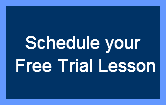 These days, the newest and hottest way to make a presentation and engage potential clients is through a webinar.
These days, the newest and hottest way to make a presentation and engage potential clients is through a webinar.
For English language learners in the business world, delivering a webinar might present a bit of a challenge but with a little focus and preparation, you can pull it off.
This month, I helped a business English student here in Boston prepare for a webinar at work. She works in the financial industry and her job for the webinar was to introduce facts and figures about her company's business idea to potential clients.
Could your boss ask you to deliver a webinar in English sometime soon? If it happens, be prepared!
Your colleagues are looking for this information too! Please share it with them!
Tweet
ESL for the Office
5 Steps to an Awesome Webinar in English
 1. Coordinate with your team before the webinar: Are you hosting the webinar by yourself? Are you sharing the presentation with other teammates? If you are working on a team, be sure that your presentation flows from slide to slide naturally. Use transitions. Here are some ways to use transitions in your webinar:
1. Coordinate with your team before the webinar: Are you hosting the webinar by yourself? Are you sharing the presentation with other teammates? If you are working on a team, be sure that your presentation flows from slide to slide naturally. Use transitions. Here are some ways to use transitions in your webinar:
- Use words to bridge ideas: Furthermore, in addition, however, finally, etc.
- Pause for a moment before moving on to the next slide
- Ask the audience a question
 2. Focus on your pronunciation and intonation when you practice: Since many webinars are done with slides and voice instead of video, you won't be able to rely on nonverbal communication to get your point across.
2. Focus on your pronunciation and intonation when you practice: Since many webinars are done with slides and voice instead of video, you won't be able to rely on nonverbal communication to get your point across.
This is why it's super important to practice with someone who is willing to sit down and correct your pronunciation.
It is a great idea to work with a business English tutor to prepare.
 3. Think about who's listening. What culture(s) are you speaking to? Are you delivering the webinar to clients in the United States? Latin America? Asia? All over the world? Similar to a live business English presentation, audiences in different cultures will expect different styles of presenting.
3. Think about who's listening. What culture(s) are you speaking to? Are you delivering the webinar to clients in the United States? Latin America? Asia? All over the world? Similar to a live business English presentation, audiences in different cultures will expect different styles of presenting.
American audiences might want you to involve them by asking questions and responding to answers in the chat pane.
Certain European cultures might expect a very logical, sequential and fact-based presentation.
To succeed with your next webinar, think about your audience!
 4. If you make a mistake, correct it and move on: Webinars move fast because you don't have a captive audience.
4. If you make a mistake, correct it and move on: Webinars move fast because you don't have a captive audience.
You are competing for your audience's attention.
Why should they listen to your webinar instead of checking their email or reading the news or scanning Expedia.com for discount flights for their next vacation? Those distractions are just one click away.
This is especially important for you. You aren't a native English speaker. Your listeners are going to figure that out. No problem! You were hired for your valuable professional skills, not your English.
The problem is, you will lose their attention and your company will lose a business opportunity if you dwell on your mistakes.
Remember, your listeners can't see you. All they have to go by is what they hear. If they don't hear confidence, why should they even consider doing business with your company?
When you make a mistake, correct it if possible and quickly move on.
Don't let it hold you back!

5. Go back and review your performance: When my student and I went back to review the taped webinar to see how she did, she admitted to making a pronunciation mistake even though we had practiced many times.
But guess what! It didn't matter.
She corrected herself and kept going.
She didn't waste time.
She stayed focused and confident. She continued to engage her audience with the facts and figures. The webinar was successful, her boss was happy and her company earned respect from new potential clients in their niche market.
Overall, it went really well!
Follow these 5 tips to prepare and your next webinar in English will be a success too!
Was this article helpful? Please share the article and help your colleagues and friends who are also learning English for business. Thanks!
Photo credit: filipe ferreira, Highways Agency Dell's Official Flickr Page, evan_carroll, splorp











